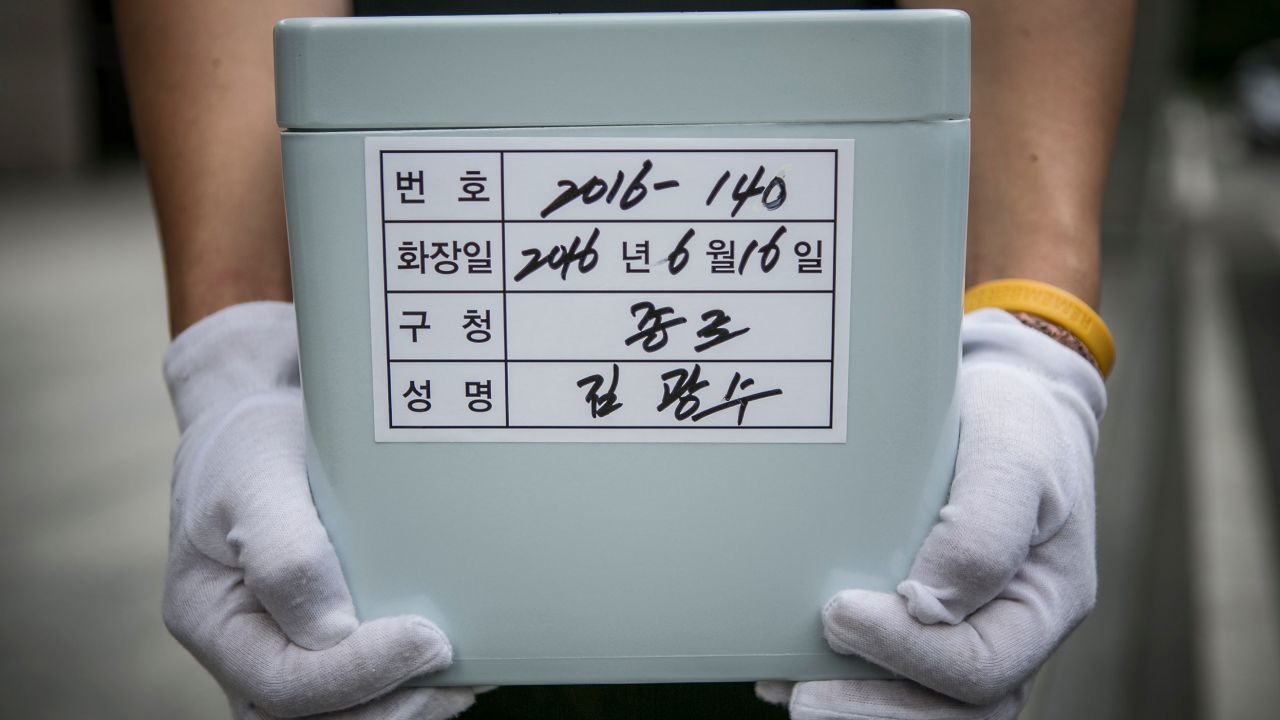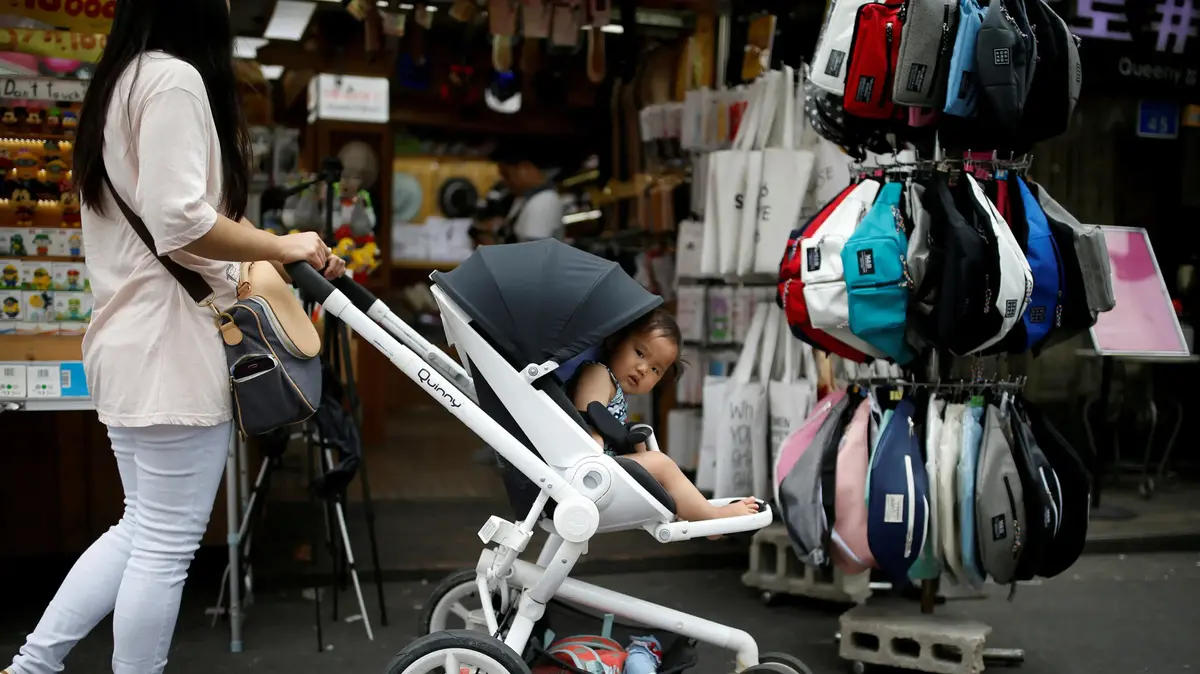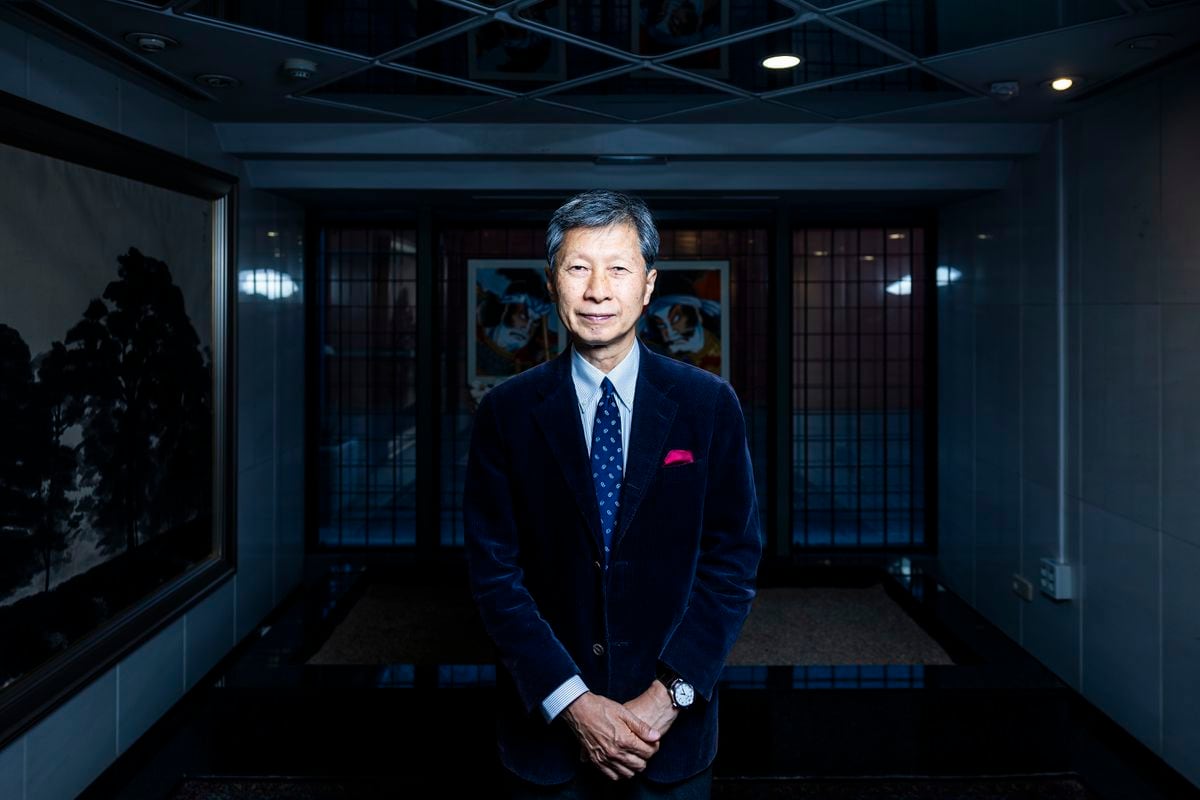A worker from the organization Good Nanum holds an urn with the remains of a man who died a "lonely death" in 2016 in Goyang, South Korea.
Credit: Jean Chung/Getty Images
(CNN) --
South Korea has a problem: Thousands of people, many middle-aged and isolated, die alone each year, often undiscovered for days or weeks.
This is
godoksa
or "solitude death", a widespread phenomenon that the government has been trying to combat for years as its population ages rapidly.
Under South Korean law, a "lonely death" is that of a person living alone, isolated from family or relatives, who dies by suicide or illness, and whose body is not found until "a certain amount of time" has elapsed.
The issue has captured national attention in the past decade, as the number of lonely deaths has risen.
Among the factors that explain this trend are the country's demographic crisis, deficiencies in social welfare, poverty and social isolation, all of them more pronounced since the covid-19 pandemic.
Last year, the country registered 3,378 deaths of this type, compared to 2,412 in 2017, according to a report published last Wednesday by the Ministry of Health and Welfare.
The ministry's report was the first since the government enacted the Lonely Death Prevention and Management Act in 2021, which requires updating every five years to help establish "lonely death prevention policies."
advertising
Staff from a non-profit organization, which holds funerals for those who died "lonely deaths", move a coffin at a crematorium in Goyang, South Korea, on June 16, 2016. Credit: Jean Chung/Getty Images
Although loneliness deaths affect people from various demographic groups, the report shows that middle-aged and elderly men appear to be especially at risk.
The number of men who will die alone will be 5.3 times higher than that of women in 2021, previously the number was only 4 times higher.
People in their 50s and 60s accounted for 60% of lonely deaths last year, with large numbers also in their 40s and 70s.
People between the ages of 20 and 30 accounted for between 6% and 8%.
The report does not delve into possible causes.
But the phenomenon has been under study for years, as authorities try to understand what drives these lonely deaths and how to best support vulnerable people.
"In preparation for a super-aging society, it is necessary to actively respond to lone deaths," South Korea's legislative research body said in a press release earlier this year, adding that the government's priority was to "quickly identify cases of social isolation".
elderly in poverty
South Korea is one of several Asian countries -- including Japan and China -- facing demographic decline, with fewer births and later deliveries.
The country's birthrate hasn't stopped falling since 2015, with experts blaming factors including a demanding work culture, rising cost of living and stagnant wages for turning people away from parenthood. .
At the same time, the workforce is shrinking, raising concerns that there are not enough workers to care for the growing older population in areas such as healthcare and home care.
Childcare is expensive almost anywhere in the world.
But in this country more
Some of the consequences of this skewed age distribution are becoming apparent, with millions of elderly residents struggling to survive on their own.
In 2016, more than 43% of South Koreans over the age of 65 lived below the poverty line, according to the Organization for Economic Co-operation and Development, more than triple the national average for other OECD countries.
The lives of middle-aged and older South Koreans "deteriorate rapidly" if they are excluded from the labor market and housing, and this is "one of the leading causes of death," wrote Song In-joo, a senior researcher at the Center. of Seoul Welfare, in a 2021 study on lonely deaths.
The study analyzed nine cases of lonely death and conducted in-depth interviews with their neighbors, landlords, and social workers.
A volunteer pastor prays at a makeshift shrine for two people who died "lonely deaths" inside the waiting room of a crematorium on July 4, 2016 in Goyang, South Korea.
Credit: Jean Chung/Getty Images
One of the cases was that of a 64-year-old factory worker who died of alcohol-related liver disease, a year after losing his job due to disability.
He had no studies, no family, not even a cell phone.
In another case, an 88-year-old woman suffered financial hardship after the death of her son.
She died after the senior welfare center she attended, which provided free meals, closed at the start of the pandemic.
"Difficulties expressed before dying by people at risk of dying alone were health problems, financial difficulties, disconnection and rejection, and difficulties coping with daily life," Song wrote.
Among the aggravating factors are the delay in public aid and the "lack of home care" for those suffering from serious or chronic illnesses.
The findings of the 2021 study were echoed in the Ministry of Health and Social Welfare report, which found that many of those at risk saw their life satisfaction "decrease rapidly due to job loss and divorce", over especially if "they were not familiar with health care and housework".
The world sacrificed its elderly in the race to protect hospitals.
The result was a catastrophe in nursing homes.
Many of the people in the 2021 study lived in cramped, dirty spaces, such as subdivided apartments known as
jjokbang
, where residents often share common facilities, and basements known as
banjiha
, which made headlines earlier this year when a family she was trapped and drowned during record rainfall in Seoul.
In big cities like Seoul, the real estate market is notoriously expensive, which means that these apartments are some of the most affordable options available.
And in addition to poor living conditions, they also carry the risk of further isolation;
these housing structures "have already been criticized as slums...and stigmatized as well," with many residents leading "anonymous" lives, the 2021 study notes.
"It is worrisome because [the concentration in housing] of lonely deaths could be another feature of the subculture of poverty," Song wrote.
close the gaps
Growing public concern about lonely deaths has prompted several regional and national initiatives over the years.
In 2018, the Seoul metropolitan government announced a "neighborhood watch" program, in which members of the community make visits to single-person households in vulnerable areas such as basements and subdivided houses, according to the Yonhap news agency.
Under this plan, hospitals, landlords, and store staff play the role of "watchdogs," notifying community workers when patients or regular customers go unattended for a long time, or when the bill is not paid. rent and other fees.
Several cities, such as Seoul, Ulsan and Jeonju, have launched mobile apps for those living alone, which automatically send a message to an emergency contact if the phone remains idle for a period of time.
Other organizations, such as churches and non-profit organizations, have also stepped up relief services and community events, as well as funeral rites for the deceased who have no one to claim or mourn them.
The Law for the Prevention and Management of Lonely Deaths, passed last year, has been the most recent and far-reaching measure to date, directing local governments to establish policies to identify and assist residents at risk .
In addition to establishing the five-year situation report, it also required the Government to draw up a comprehensive preventive plan, which is still being prepared.
Staff and a volunteer Buddhist nun from a non-profit organization carry the name tablets of people who died a "lonely death" in a crematorium on June 16, 2016 in Goyang, South Korea.
Credit: Jean Chung/Getty Images
In another study published in November, Song recommended authorities create more support systems for those trying to recover, including education, training and counseling programs for the middle-aged and elderly.
In a press release accompanying the report on Wednesday, Health and Welfare Minister Cho Kyu-hong said South Korea was working to "become like other countries, including the UK and Japan, which recently launched strategies ... [to deal with] loneliness deaths".
"This analysis is significant as a first step for central and local governments to deal responsibly with this crisis of a new welfare blind spot," he said.
deaths loneliness









